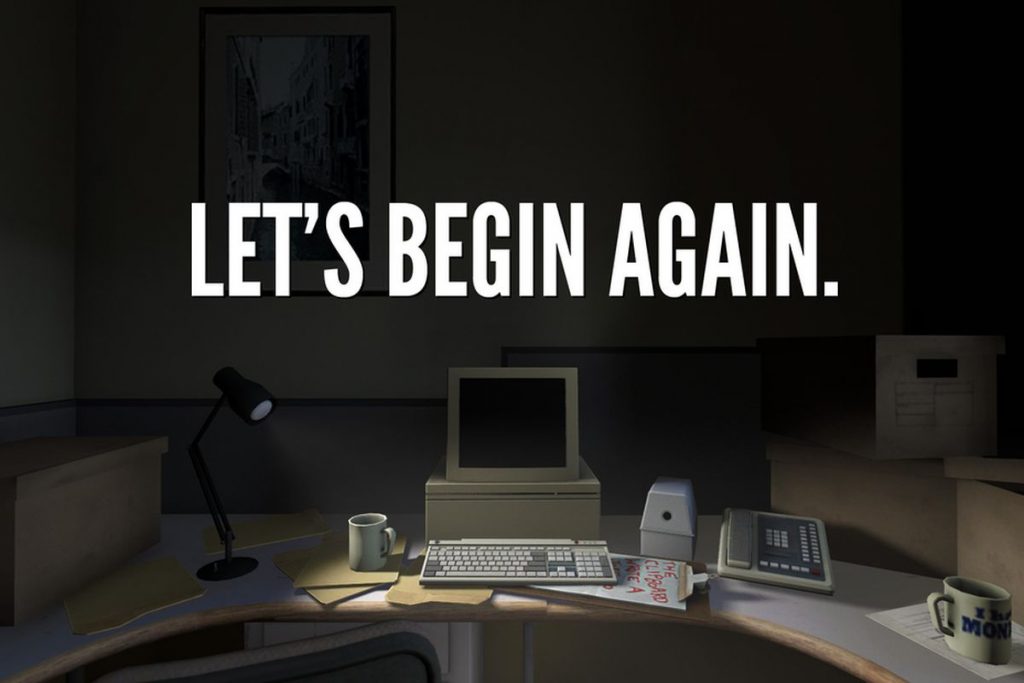I’ve only ever experienced VR games through watching YouTube gamers play them, listening to them marvel at the immersiveness and how cool the controls are (especially the Oculus Quest). That was until our amazing Profs brought a few VR sets to class to let us play around with them. I was indeed #blessed.
The moment I put on the VR headset, I was already tricked visually and mentally in believing that the VR world exists physically. Case in point, I tried to rest my hands on a virtual table, and thank the lord I didn’t put my full weight on it, or I’d have broken my head along with the headset.
TLDR: I love the immersiveness that comes with VR, and The Chalkroom, by was just an excellent example of how it can be used as an interactive installation.

Image from https://www.optionstheedge.com/sites/default/files/assets/2020/laurie_anderson_and_hsin-chien_huang_.jpg
“Chalkroom is a virtual reality work by Laurie Anderson and Hsin-Chien Huang in which the reader flies through an enormous structure made of words, drawings and stories. Once you enter you are free to roam and fly. Words sail through the air as emails. They fall into dust. They form and reform.”
– Laurie Anderson
Describe what you like and dislike about it.
I loved the design of the VR environment. It was nothing familiar in terms of what we see everyday; it was just many gigantic, black cuboids, placed at different altitudes. And when you look down between each platform, it’s just a bottomless pit (but like, with grey clouds drifting ominously below). This unfamiliar and somewhat creepy visual environment is super effective in evoking that feeling of being lost, totally clueless of where you are or what you’re supposed to do.
Another thing I love is that you can F L Y in the VR world. The controls to do so, if I recall correctly, was to put the controllers together, point them in the direction you want to go, and stretch out your arms. The further you stretch, the faster you go. I really liked how with visuals alone, I was tricked into believing in the VR world I was in. For example, whenever I moved forward and then stopped, my body would actually jerk forward a little, as though inertia was actually acting on me. It was super fun. Until the motion sickness kicked in, which was the only thing I disliked. Because of that, I didn’t get to enter all the other rooms (and I think I only visited 3 main ones)
Overall, the interactivity was pretty cool, using the controllers to move, draw, and even using our own voice to create sculptures. The only issue I faced was moving backwards after entering the interactive zones. It was tricky, but I made it out eventually.

Image from https://i.ytimg.com/vi/oY_jE1V7_hU/maxresdefault.jpg
Describe how this installation fits into the overall environment. How effective was it?
In terms of physical and VR environments, both of them seemed to fit seamlessly together at the beginning. The walls of the physical room were black, with chalk markings all over. In the center were four stools, the VR equipment, and the metal frame with motion sensors on them. The mapping was done so well. Putting on the VR headset was like putting on goggles; even though it was obstructing my view of the physical setting, the display allowed me to seemingly see though the headset. The cool part was when I turned around in my stool to see what’a behind me and saw the other four VR stools were exactly where the physical ones would have been.
So, effective? Hella.
How is the audience invited to engage with the installation, and how to they interact with it?
I guess the invitation to interact was mainly though the narrator sharing information and guiding us on how to interact in each particular room. Without the narrator’s prompt, I think we might have missed out on interaction opportunities in certain areas. To interact within the VR world was to simply point and aim the controller at whatever you wanted to interact with and pull a trigger. Even the controls for flying, which I’ve explained previously, was easy. And that’s very important, in terms of ensuring that the participants remain immersed in exploration and interaction.
Pick one feature/idea/concept from the installation, and discuss how you can incorporate it into your own interactive environment project.
I really liked the concept of using people’s senses against them; making them believe one thing when it’s actually something else. I also like the idea of physical exploration, where the participants can move about an area that is unfamiliar to them, having to interact with things to make sense of the world around them.
I would like to incorporate these two main concepts into my IE project, combining it with the topic of guilt-tripping. Through incorporating these two concepts, I intend to make the participants have this constant feeling of unease; to make them curious, yet cautions. It would be like thinking you might be in danger, but you keep exploring anyways.

















